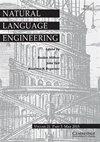Obituary: Yorick Wilks
IF 1.9
3区 计算机科学
Q3 COMPUTER SCIENCE, ARTIFICIAL INTELLIGENCE
引用次数: 0
Abstract
Yorick was a great friend of Natural Language Engineering. He was a member of the founding editorial board, but more to the point was a sage and encouraging advisor to the Founding Editors Roberto Garigliano, John Tait, and Branimir Boguraev right from the genesis of the project. At the time of his death, Yorick was one of, if not the, doyen of computational linguists. He had been continuously active in the field since 1962. Having graduated in philosophy, he took up a position in Margaret Masterman’s Cambridge Language Research Unit, an eccentric and somewhat informal organisation which started the careers of many pioneers of artificial intelligence and natural language engineering including Karen Spärck Jones, Martin Kay, Margaret Boden, and Roger Needham (thought by some to be the originator of machine learning, as well as much else in computing). Yorick was awarded a PhD in 1968 for work on the use of interlingua in machine translation. His PhD thesis stands out not least for its bright yellow binding (Wilks, 1968). Wilks’ effective PhD supervisor was Margaret Masterman, a student of Wittgenstein’s, although his work was formally directed by the distinguished philosopher Richard Braithwaite, Masterman’s husband, as she lacked an appropriate established position in the University of Cambridge. Inevitably, given the puny computers of the time, Yorick’s PhD work falls well short of the scientific standards of the 21st Century. Despite its shortcomings, his pioneering work influenced many people who have ultimately contributed to the now widespread practical use of machine translation and other automatic language processing systems. In particular, it would be reasonable to surmise that the current success of deep learning systems is based on inferring or inducing a hidden interlingua of the sort Wilks and colleagues tried to handcraft in the 1960s and 1970s. Furthermore, all probabilistic language systems are based on selecting a better or more likely interpretation of a fragment of language over a less likely one, a development of the preference semantics notion originally invented and popularised byWillks (1973, 1975). As a result, his early work continues to be worth studying, not least for the very deep insights careful reading often reveals. Underlying this early work was an interest in metaphor, which Yorick recognised as a pervasive feature of language. This was a topic to which Yorick returned repeatedly throughout his life. Wilks (1978) began to develop his approach, with Barnden (2007) providing a useful summary of work to that date. However, there is much later work – for example Wilks et al. (2013). Wilks was an important figure in the attempt to utilise existing, published dictionaries as a knowledge source for automatic natural language processing systems (Wilks, Slator, and Guthrie, 1996). This endeavour ultimately foundered on the differing interests of commercial dictionary publishers and developers of natural language processing systems. However, these early efforts stimulated the development of open-source resources, especially Wordnet (Fellbaum, 1998), many of which continue to be widely used.讣告:约里克·威尔克斯
约里克是自然语言工程的好朋友。他是创始编辑委员会的成员,但更重要的是,从项目开始,他就是创始编辑Roberto Garigliano、John Tait和Branimir Boguraev的明智和鼓舞人心的顾问。约里克去世时,即使不是计算语言学家的元老,也是其中之一。自1962年以来,他一直活跃在这一领域。哲学专业毕业后,他在玛格丽特·马斯特曼的剑桥语言研究所担任了一个职位,这是一个古怪且有点非正式的组织,开创了许多人工智能和自然语言工程先驱的职业生涯,包括Karen Spärck Jones、Martin Kay、Margaret Boden,以及罗杰·李约瑟(被一些人认为是机器学习以及其他许多计算领域的创始人)。约里克于1968年因在机器翻译中使用语际语而获得博士学位。他的博士论文引人注目,尤其是其明亮的黄色装订(Wilks,1968)。威尔克斯有效的博士生导师是维特根斯坦的学生玛格丽特·马斯特曼,尽管他的作品是由马斯特曼的丈夫、著名哲学家理查德·布雷斯韦特正式指导的,因为她在剑桥大学缺乏合适的既定职位。不可避免的是,考虑到当时的计算机很小,约里克的博士研究远远达不到21世纪的科学标准。尽管存在不足,但他的开创性工作影响了许多人,他们最终为机器翻译和其他自动语言处理系统的广泛实际应用做出了贡献。特别是,可以合理地推测,深度学习系统目前的成功是基于推断或诱导威尔克斯及其同事在20世纪60年代和70年代试图手工制作的那种隐藏的语际语言。此外,所有的概率语言系统都是基于选择一个更好或更有可能的语言片段解释,而不是一个不太可能的解释,这是Willks(19731975)最初发明并推广的偏好语义概念的发展。因此,他的早期作品仍然值得研究,尤其是仔细阅读经常揭示的深刻见解。这项早期工作的基础是对隐喻的兴趣,约里克认为隐喻是语言的一个普遍特征。这是约里克一生中反复提及的话题。Wilks(1978)开始发展他的方法,Barnden(2007)对迄今为止的工作进行了有益的总结。然而,还有许多后续工作——例如Wilks等人(2013)。Wilks是试图利用现有出版的词典作为自动自然语言处理系统的知识来源的重要人物(Wilks、Slator和Guthrie,1996)。这一努力最终因商业词典出版商和自然语言处理系统开发人员的不同兴趣而失败。然而,这些早期的努力刺激了开源资源的开发,尤其是Wordnet(Fellbaum,1998),其中许多仍在广泛使用。
本文章由计算机程序翻译,如有差异,请以英文原文为准。
求助全文
约1分钟内获得全文
求助全文
来源期刊

Natural Language Engineering
COMPUTER SCIENCE, ARTIFICIAL INTELLIGENCE-
CiteScore
5.90
自引率
12.00%
发文量
60
审稿时长
>12 weeks
期刊介绍:
Natural Language Engineering meets the needs of professionals and researchers working in all areas of computerised language processing, whether from the perspective of theoretical or descriptive linguistics, lexicology, computer science or engineering. Its aim is to bridge the gap between traditional computational linguistics research and the implementation of practical applications with potential real-world use. As well as publishing research articles on a broad range of topics - from text analysis, machine translation, information retrieval and speech analysis and generation to integrated systems and multi modal interfaces - it also publishes special issues on specific areas and technologies within these topics, an industry watch column and book reviews.
 求助内容:
求助内容: 应助结果提醒方式:
应助结果提醒方式:


